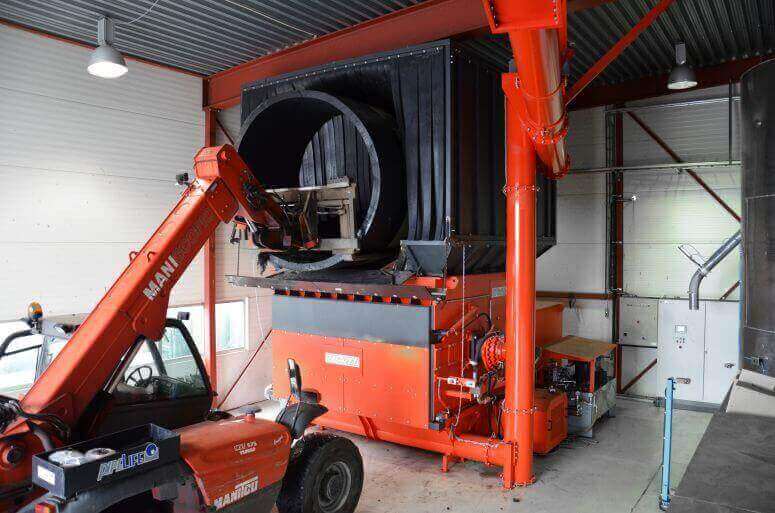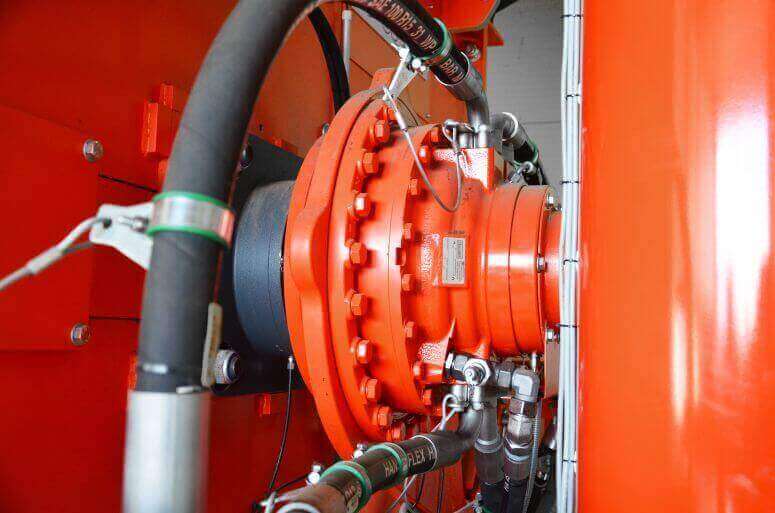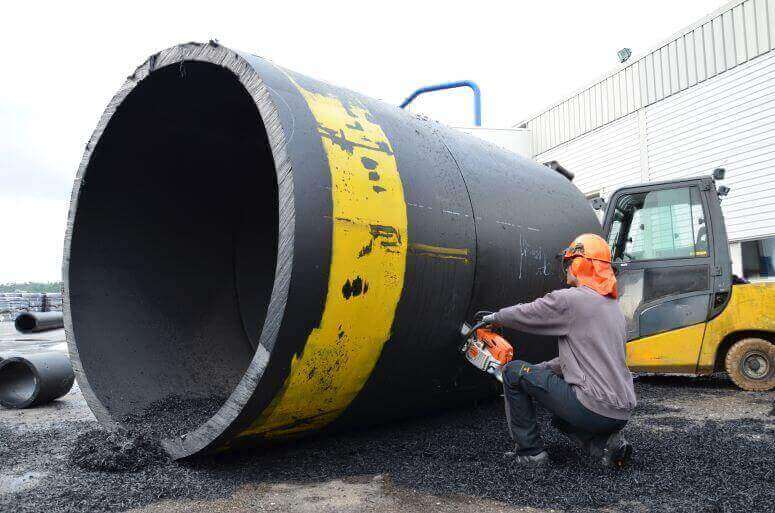The Pipelife Group is a leading manufacturer of plastic pipe systems in Europe. The company's flagship products are created at its Stathelle facility in Norway, where PE pipeline pipes hundreds of meters long and up to 2.50 meters in diameter are produced for use throughout the world.
Since the beginning of this year, production waste that accumulates has been shredded and recycled with a powerful 160 kW WEIMA WLK 30 Super Jumbo single-shaft shredder so that it can be integrated back into the manufacturing process.
The Pipelife location in Stathelle stands out prominently from a great distance. The reason for this is the deep black pipes up to 500 meters long floating in the middle of a picturesque Norwegian fjord. Primarily for reasons of space, the pipes are extruded directly out onto the open water. They are stored there until they are picked up for delivery by maritime shipping. This is not an everyday event and it usually draws many curious onlookers who come and celebrate the completion of the process. This is how to present a true mammoth project!

Fig. 1: Pipelife Stathelle (Norway), looking out over the fjord and manufacturing scrap
Until now, voluminous pipe waste had to be painstakingly cut into DIN A3-size pieces by employees with chain saws and then packed onto pallets to be transported away. The mountains of waste were growing steadily and taking up valuable storage space. A solution had to be found for the problem as quickly as possible. And so they finally came across the experienced shredding specialist WEIMA from Ilsfeld, Germany, which had already successfully implemented similar projects in Asia.

Fig. 2: WEIMA WLK 30 Super Jumbo shredders with 2.50-meter pipe section
The way to achieve the objective was clear: First, shred pipe pieces that could no longer be recycled using the WEIMA WLK 30 Super Jumbo shredder. Then supply the shredded material via a screw conveyor to a granulator. The extruder used after this, which includes drying, ultimately converts old PE plastic residue into recycled regranulate, which in turn can be supplied into the raw material cycle. It is stored in giant silos on the company grounds. Nothing goes to waste in this sustainable solution.
The steel colossus is driven by WEIMA’s powerful 160 kW hydraulic drive. Stopping, starting and reversing are possible at any time, even under the most difficult conditions and at full load. With its simple design and fast response time, the hydraulic drive is nearly insensitive to contaminants. Extremely high torques and the rotational speed can be adjusted flexibly, quickly, uniformly and steplessly, without creating current surges and without having to use a frequency inverter. Due to the low connected load with the same or higher throughput, less electrical power is required, which makes it possible to reduce operating costs overall.

Fig. 3: PE pipe in the cutting chamber
The shredding process is both simple and ingenious. To keep the effort required as low as possible, the feed hopper was dimensioned so that even pipeline sections 2.50 meters in diameter could be loaded into the shredder in one piece with a forklift truck. The rest is taken care of by the innovative, high-throughput V rotor, fitted with 135 cutting blades, which reduces the pipe walls 10 cm thick to pieces no larger than 50 mm.

Fig. 4: WEIMA 160 kW hydraulic drive
The steel colossus is driven by WEIMA’s powerful 160 kW hydraulic drive. Stopping, starting and reversing are possible at any time, even under the most difficult conditions and at full load. With its simple design and fast response time, the hydraulic drive is nearly insensitive to contaminants. Extremely high torques and the rotational speed can be adjusted flexibly, quickly, uniformly and steplessly, without creating current surges and without having to use a frequency inverter. Due to the low connected load with the same or higher throughput, less electrical power is required, which makes it possible to reduce operating costs overall.

Fig. 5: Cutting PE plastic pipes into pieces
The processing of PE-scrap not only has financial benefits for Pipelife. Through this technological innovation, the company has stated that it has a vision: to save water and energy through innovative solutions. WEIMA considers that a noble and exciting goal.

Fig. 6: The plastic cycle at Pipelife
Reconditioning PE waste has benefits beyond financial considerations. This technological advantage provides impressive confirmation of the company’s vision of continuously improving “the quality of life through innovative and highly effective solutions to protect water and energy.“ As WEIMA sees it, everything fits together perfectly.